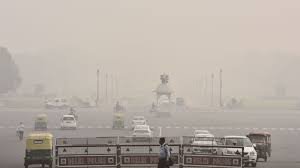Delhi woke up today to a dense, suffocating blanket of smog as air pollution levels shot up to hazardous levels. According to live data from Swiss air-quality tracker IQAir, the national capital recorded the worst air quality in the world among major cities on Tuesday morning.
In several parts of Delhi, the concentration of ultra-fine particulate matter (PM2.5) soared to nearly 16 times the World Health Organization’s safe limit, registering readings around 248 µg/m³ against the WHO guideline of 15 µg/m³. By 11:08 a.m., IQAir’s live ranking placed Delhi at an AQI of 442, firmly within the “severe” category — a level considered dangerous for all residents.
The toxic haze followed a night of Diwali celebrations, with widespread firecracker use contributing to a sharp overnight surge in pollution. Combined with low wind speeds and cooler temperatures, pollutants became trapped near the ground, reducing visibility and turning the city skyline grey.
Experts say this crisis is not just about festive emissions. Persistent traffic fumes, industrial output, and stubble burning in neighbouring states have all intensified the problem, making this annual smog season an increasingly dire health emergency.
Health officials have warned that exposure to current levels of pollution could cause respiratory distress, asthma flare-ups, heart complications, and other serious health problems — particularly among children, the elderly, and people with pre-existing conditions. Authorities have urged residents to stay indoors, use N95 or FFP2 masks, and avoid outdoor exertion whenever possible.
In response, the government has triggered Stage 2 of the Graded Response Action Plan (GRAP) — enforcing curbs on construction activity, diesel vehicle movement, and generator use. Officials are also considering stricter measures, including temporary school closures or online classes, if conditions worsen further.
While Delhi’s winters have long been associated with smog, experts warn that the frequency and intensity of such episodes are rising. Recent studies show the city’s air quality has, at times, reached up to 30 times above WHO’s safety threshold — a stark reminder that quick fixes will not solve a problem that demands long-term, coordinated action.




